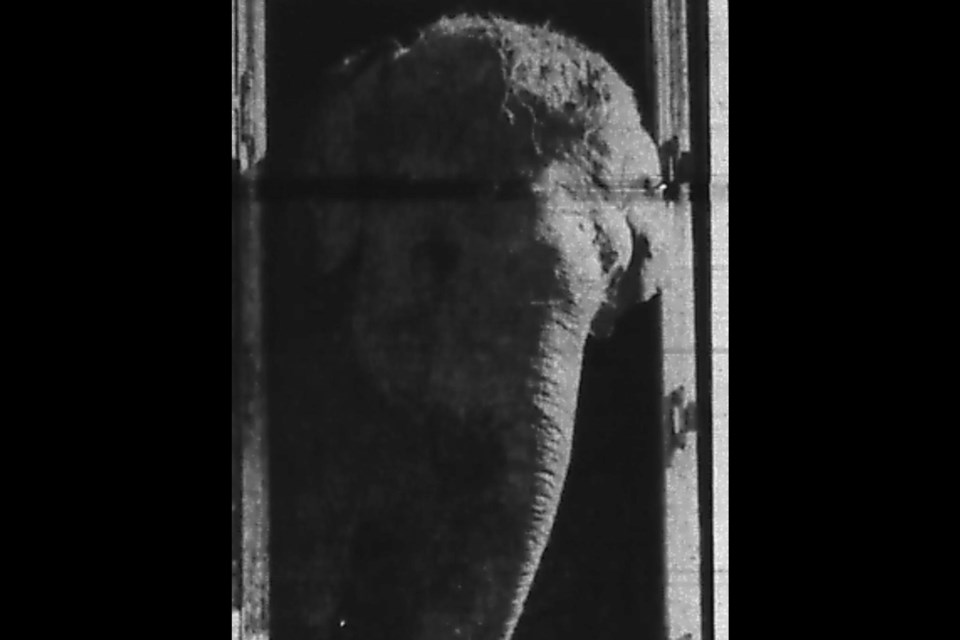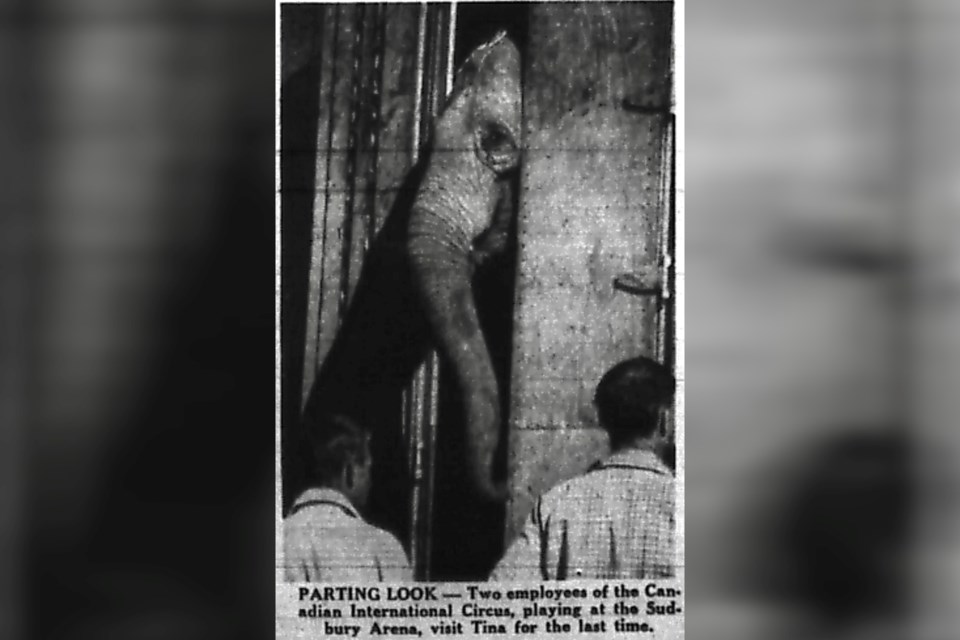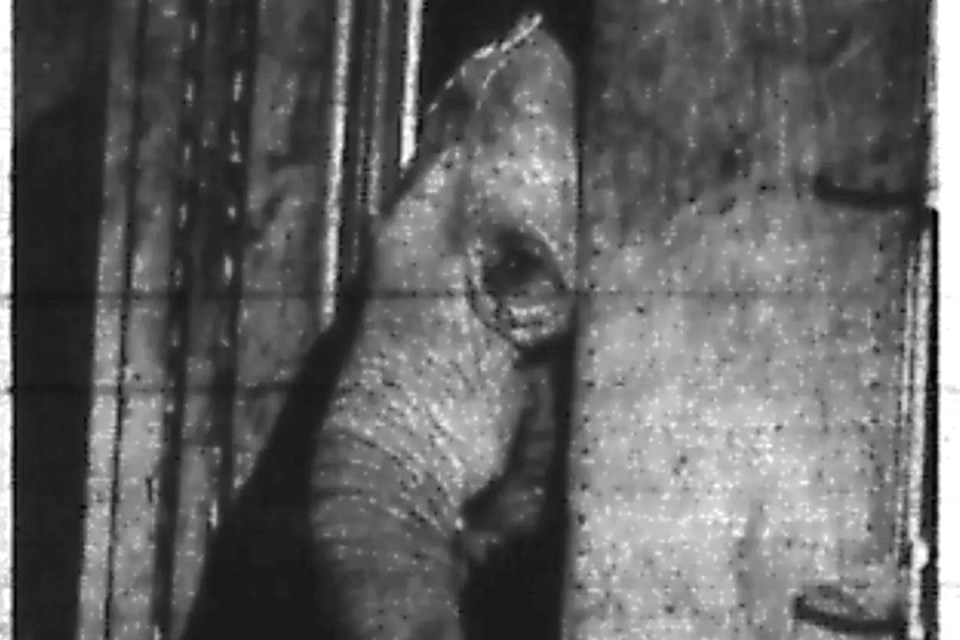“The Greatest Show on Earth” and “The World’s Biggest Menagerie” were two of the slogans that the Ringling Brothers and Barnum and Bailey Circus hung their hat on for generations. And, every other circus across North America did their best to try to match this heavyweight of the business with their own thrills, chills and animal skills.
When you say the word “circus” to most people, the mind always flashes to those three-ring, big-top spectacles of yesteryear as featured in Cecil B. DeMille’s 1952 extravaganza “The Greatest Show on Earth” or more benignly, in Disney’s 1940 classic, “Dumbo”.
But, unlike the latter story, which ended in typical Uncle Walt fashion with everyone receiving a happy ending, the story I will be presenting to you today offers us a glimpse at the flip side of the use of animals for entertainment purposes in circuses.
It was an unseasonably cold six degrees on the morning of Aug. 4 1972, as a caravan of vehicles reached downtown, marking the arrival of the Canadian International Circus to Sudbury Arena. The circus, which was sponsored by the New Sudbury Lions Club, had been hired to put on performances at the arena on Friday (the same day as their arrival) and again on Saturday, after having performed in Brantford the evening before.
This travelling circus was based in Vancouver and produced by Canadian Dominion Productions Ltd. The next stop on its westward journey would be Wawa with a view towards an arrival in Winnipeg by the end of the following week.
After arriving at the vehicle staging area outside of the Sudbury Arena, the circus staff took the time to get their bearings and shake off the unsteadiness from the long overnight trip northward. Once the cobwebs were shook off, it was time to begin preparing for that night’s first performance.
At around 8:30 a.m, Chester Longe, 40, from Oregon, who was the assistant elephant trainer, entered the transport truck trailer that contained the circus' three elephants. His designated task at that time was to unchain each of them, now that they had arrived at their destination.
His reason for doing this was that the first thing that the elephant handlers are expected to do upon arrival is to exercise the elephants in preparation for their performance during the show.

Unfortunately, tragedy struck not long after Longe entered the elephant trailer. As stated at the time by Bob Emerico, the head clown of the circus, after a few minutes “they didn't hear anything and they hollered for him but there was no answer.”
This caused concern for the head elephant trainer, Paul Duke, who immediately rushed into the trailer along with several other stagehands. They were met with the grim sight of Chester Longe whose body was badly crushed.
One of the three elephants who made the trailer home during their travels, an 11-year-old pachyderm known by the name of “Tina”, was found to have her front left leg splattered with blood. Even after the devastating attack on Longe, none of the elephants bothered the circus employees as they ventured in to remove Longe from the trailer. An ambulance was called to the scene immediately, however he was declared dead upon arrival at Sudbury General Hospital.
Tina and the other two elephants that were in the trailer were not unchained after the incident and the trailer was immediately roped off in order to keep spectators and circus employees away from them.
"She always was a really bad elephant," Emerico said in an interview at the time. But, “you have to be careful with all animals," added the circus’ ringmaster, Al Dawley.
The 4,500-pound elephant had only been with the circus since January of that year. While Chester Longe had been with the circus for about three months, although he had had a great deal of experience working with elephants at other circuses. Duke said at the time that he had “never had any trouble whatsoever from the other two elephants. They both had good reputations. Tina has acted up before, but has never given trouble to (me).”
Rather surprisingly, after what had occurred only hours before, it was announced by Dawley, around midday, that “the show will go on." Although, he added, “I don’t know if there will be an elephant act. The trainer, Duke, is pretty shook up."
Paul Duke and Chester Longe were wholly responsible for all of the elephants that performed for the circus and by the very nature of their job had worked and lived in close proximity constantly, Dawley explained at the time.
After the incident, the ultimate fate of the elephant had to be determined.
“In the States, it would be up to the elephant's owner to decide whether or not to destroy the animal,” said Emerico, "but I don’t know what the rules are in Canada.”
Gordon Brackett, manager of the Sudbury and District Humane Society, was given the unenviable task of trying to find a zoo that would be willing to take in the animal. Unfortunately, in the end, his search would prove unsuccessful. He had also enlisted Norman Scollard, the curator of Toronto's Riverdale Zoo, in a bid to find a home for Tina. Scollard made enquiries all across Canada and to several cities in the United States but all of his attempts were met with failure.
The deadline was tight with a decision needing to be made by Saturday night, when the circus would be pulling up stakes and heading for Wawa. Therefore, the decision was reluctantly made by Tina's owner, Dolly Jacobs of Tacoma, Washington, to put her down, after being informed that all of the overnight attempts to place her in a zoo had failed.
Paul Duke said that he would have been willing to keep Tina and take her to Winnipeg, but it was ultimately decided that it would be just too dangerous for everyone involved. It was believed that an elephant that had already killed once might try again.
Duke was said to be a little leery of handling Tina on the day after the incident, however he was able to water her without any trouble. “She still squeaks to me," Duke said. “As long as she is talking, everything is all right. But when she stops talking, look out."
Once the final decision was made, Brackett contacted the Ontario Ministry of Natural Resources. As well, he discussed with local veterinarians a plan in order to determine the best method for disposing of Tina. For his part, Duke said that the usual way was just to shoot the animal. “It's the most humane way," he said.
Later that Saturday, Tina was transported to the city garbage dump, where she was shot and buried in a large pit. The heartbreaking deed was performed by an officer of the Ministry of Natural Resources with the use of a high-powered rifle.
Strangely enough, this is not where our story ends…
At the end of that same month, a 28-year-old taxidermist by the name of Grant MacLeod was interviewed by United Press International (UPI), about a large project that was being worked on in the barn on his farm 45 miles north of Toronto. It turns out that Tina the elephant did not remain in the Sudbury dump for very long.
As MacLeod told the story to the UPI’s reporter, “… on Saturday night's 7 o'clock news, I hear about Tina over the radio. Well, to shoot it, stick it in the ground and let it decompose is a sin, so I thought I'd better get up there and speak up for it."
Macleod and friends then made the 370-km trip, arriving in Sudbury by 6 a.m. Sunday, not even 48 hours since the initial dreadful incident.

After spending two hours attempting to locate the elephant's grave at the city dump, they would then spend two full days navigating the municipal bureaucracy before receiving the go-ahead to exhume Tina, with the assistance of a bulldozer. "Another day and she would have been beyond salvaging," said Macleod.
While in the process of preparing the elephant for the taxidermy procedure, MacLeod (who required five helpers for this venture) also believed that he discovered the real reason behind why she may have been provoked into her death-dealing charge on Chester Longe. Macleod ascertained that Tina may have run amok because she was suffering from a very bad toothache.
He said “the circus owners just assumed that the elephant had gone bad and attacked (Longe).” But, he continued, “when I reached into the mouth, there was a tooth there that just came out. It may have been a bad toothache that made her attack the trainer." While discussing that tooth, which was pitted with cavities, Macleod acknowledged the unfortunate fact that “if she had had a good dentist, Tina might have been alive today and a man's life saved."
Unfortunately, for the purposes of bringing closure to Tina’s story, I was not able to discover any more information of her ultimate fate. However, in his interview, Grant MacLeod was pondering both grandiose ideas (“Could you imagine what it would be like with a cat pouncing [on her back]?”) as well as more educational ones, specifically mentioning the Canadian Museum of Nature in Ottawa. Though he made a point of saying that he was in no hurry to make a decision about Tina’s future.
As for other wild animals being used in circus performances, just last year, in December 2023, Bill S-15 (An Act to amend the Criminal Code and the Wild Animal and Plant Protection and Regulation of International and Interprovincial Trade Act) was tabled in the Senate. One of the sections of the act, if passed unchanged, would “prohibit the use of captive elephants and great apes for entertainment in a performance…” This new Criminal Code offence would be punishable by a fine not exceeding $200,000.
While it’s possible that there may still be a few wild animals that are being used in traveling shows in Canada, they are now considered exceedingly rare. In fact, in preparation for this story, I could not find any circuses with wild animal acts that were currently (or planning on) crisscrossing Canada. Animals that were, in the past, considered integral to those circuses, such as elephants, large cats, bears and primates, are now essentially absent from circuses touring Canada today. And, thinking back to the entwined fates of Chester Longe and Tina the elephant, that is a good thing.
Jason Marcon is a writer and history enthusiast in Greater Sudbury. He runs the Coniston Historical Group and the Sudbury Then and Now Facebook page. Then & Now is made possible by our Community Leaders Program.
